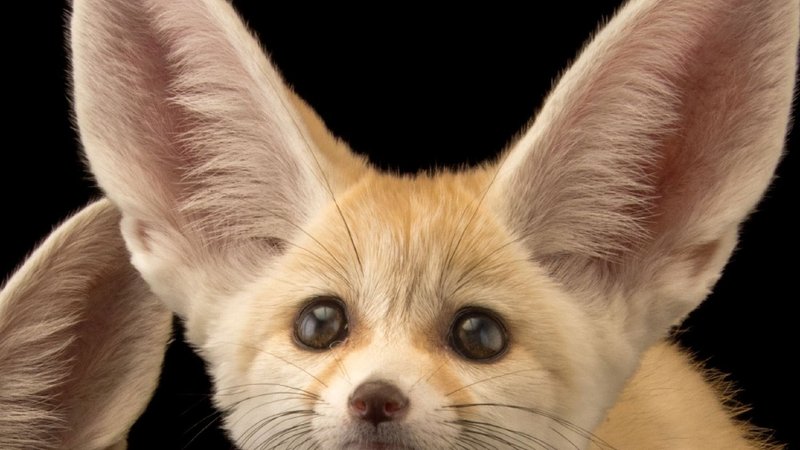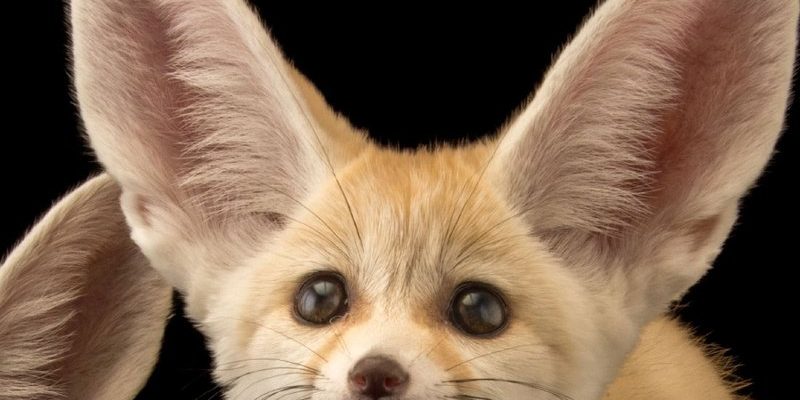
The fennec fox, or *Vulpes zerda*, is perfectly built for life in the Sahara Desert. Its ears, which can grow up to six inches long, serve as both cooling devices and keen listening tools, helping it detect prey even underground. But how did this animal evolve to thrive in such a harsh environment? Let’s dig deeper into the fennec fox’s captivating story, exploring its ancestors, adaptations, and its vital role in the ecosystem.
Where It All Began: Ancestral Roots
The story of the fennec fox can be traced back to its ancestors, which roamed the Earth millions of years ago. The canid family tree, which includes dogs, wolves, and foxes, began developing around 40 million years ago. Early canids were larger and lived in diverse environments, primarily hunting for larger prey.
Over time, as climates shifted and habitats changed, these animals adapted to their surroundings. The fennec’s more recent ancestors likely split from their relatives during the Pleistocene epoch, around 1.5 million years ago. As some foxes ventured into arid regions, they found themselves needing to adapt or perish in the unforgiving desert landscape.
With survival at stake, the fennec fox began to evolve specific traits that allowed it to thrive in extreme heat and low water availability. Unlike its larger counterparts, the fennec fox became smaller and more lightweight—a crucial adaptation for speed and agility in the sandy terrain.
Unique Adaptations for Desert Life
So, what makes the fennec fox so special? Well, it’s all in the adaptations. First and foremost, those huge ears aren’t just for show. They help radiate heat away from the body, keeping the fox cool under the blazing sun. When you think about it, it’s almost like having built-in air conditioning!
Additionally, the fennec fox has developed a thick coat that reflects sunlight during the day and insulates it from the cold at night. This ability to survive extreme temperature fluctuations is crucial in the desert where daytime heat can be brutal, but nights can feel like winter.
Their diet is also a testament to their adaptability. Fennec foxes are opportunistic eaters, which means they’ll consume whatever food sources are available, from insects to small mammals, fruit, and even plants. This flexible diet ensures they can find food in an environment where resources can be sparse.
Social Structures and Behavior
When considering the evolutionary history of the fennec fox, it’s essential to look at their social behavior. Unlike many fox species that are solitary, fennec foxes are often found in small family groups. This social structure helps them cooperate while hunting and provides protection against predators.
These family units typically consist of a monogamous pair and their kits. You might find them playing together in the sand, which not only strengthens their social bonds but also helps young foxes develop essential survival skills. This playful behavior is a critical part of their growth and adaptation, as it allows kits to learn how to navigate their environment and hunt more effectively.
Ecological Importance
The fennec fox plays a vital role in its ecosystem. As a predator, it helps control the population of small rodents and insects, maintaining a natural balance within its habitat. The foxes also serve as prey for larger animals, such as birds of prey, creating a complex web of life in the desert.
Moreover, fennec foxes contribute to seed dispersal. When they eat fruits, they help spread seeds throughout the desert, promoting plant growth and diversity. This is essential in creating a sustainable environment for other wildlife and supporting the overall health of their ecosystem.
Current Threats and Conservation
Despite their fascinating adaptations, fennec foxes face several threats today. Habitat loss due to human encroachment and agricultural expansion is one of the most significant challenges. As deserts become more populated, the natural habitats of these foxes shrink, putting pressure on their survival.
Additionally, hunting and the pet trade pose risks to fennec populations. While their adorable appearance can make them enticing pets, keeping fennec foxes in captivity often leads to welfare issues due to their specific needs.
Conservation efforts are crucial to protect these unique creatures and their habitats. Organizations are working to raise awareness, create protected areas, and ensure that the fennec fox can continue its legacy in the wild.
The evolutionary history of the fennec fox is a remarkable tale of survival and adaptation. From its ancient ancestors to the charming desert dweller we see today, this fox has adapted in extraordinary ways to thrive in one of the harshest environments on Earth.
Understanding the journey of the fennec fox not only helps us appreciate its unique adaptations but also highlights the importance of protecting its habitat. As climate change and human activity continue to threaten ecosystems, it’s more vital than ever to respect and safeguard the diverse species that share our planet. So next time you think of the fennec fox, remember it’s not just a cute animal; it’s a symbol of resilience, adaptability, and nature’s incredible ingenuity.

